WHEN: Today, Monday, May 2, 2022
WHERE: CNBC’s “Power Lunch”
Following is the unofficial transcript of a CNBC exclusive interview with Bank of America Chairman & CEO Brian Moynihan on CNBC’s “Power Lunch” (M-F, 2PM-3PM ET) today, Monday, May 2nd. Following is a link to video on CNBC.com:
All references must be sourced to CNBC.
BERTHA COOMBS: Thanks very much, Tyler. And thank you so much Brian for having me here at the World Medical Innovation Forum and for joining us this afternoon. You know, we’ve come off an incredibly volatile month and it’s certainly not looking any different here at the start of May. You talked about a couple of weeks ago how resilient the consumer seems and you seem very buoyant about the economy. As we are looking at things here over the last couple of weeks and we’re going into the Fed raising interest rates this week, where do you stand now?
BRIAN MOYNIHAN: Well, if you look at – first of all Bertha, thank you for coming to Boston and helping host the conference here with some of these great medical innovators that you just walk around the halls. So it’s really something special with Mass General and the talent in this room. So these are about financial markets, this is about saving people’s lives. So we’ve got to keep that in mind. But look, the month of April so far, consumers stronger than it was in March. And so the consumers continue to spend money and so people say, well, they’re spending more because inflation has raised prices. The reality is that transaction volume is rising 10% over the last year, which means they’re doing more. You only go out to eat for dinner one time a night, not three. So you spend it. So, you’ve seen the money being spent, you’re seeing the money in their accounts continuing to build. Not go down, but build, which frankly poses a tougher challenge to the Fed because how do they slow down a consumer driven economy? And you heard Santelli say earlier though that you know, the imports and stuff are strong because people are still demanding goods and that’s a good final demand. So we have this tug of war right now. But consumer is strong, businesses are in great credit shape, trying to get goods and services sell, trying to get employees and that’s creating worry as to what happens after the Fed actually gets the rate structure up and that’s what you’re seeing play out in the market. Oddly enough when rates are rising usually they equate that with bank stocks going up, but the debate about recession – we don’t see any of that. Our credit quality is as strong as it’s been, you know, the loan originations are as high quality as they have ever been.
COOMBS: So, you don’t see it and yet, you know, obviously one data point does not a trend make, but we certainly saw that first reading on GDP with contraction for the first quarter. We just saw ISM today disappoint as well and a lot of those numbers were also lower as well. Could we be seeing some of the cracks? And if the Fed continues on this pace, the expectation is a half a percent this week, but some people are starting to say maybe in July they’ll be doing three quarters of a percent. Can they engineer this, get ahead of inflation without putting us into some kind of deep recession?
MOYNIHAN: They use the word deep and that’s – they’re trying to have a soft landing or a little bit of a bumpy landing, but not a deep landing. Obviously that’s the job they’re trying to manage. The thing is, just statistically talk about – the one that you didn’t talk about was the labor market. So last week, I think was another 180,000 new claims for unemployment. If people say well that is a 50 year low, the labor force was one half the size last time it was at that nominal number. So 80 million people were working versus 150 or whatever it was exactly. Think about that. So on a relative basis, the labor market is very strong and that’s the difficult challenge for the Fed – is to actually get the labor market to cool down. Rising wages, 1.7-plus jobs for every job that’s open. You know, 10%, underemployment in places needing workers and services side sectors. So that’s going to need attention. Now, simply put, from late last fall into early part of this year, you know, our experts at the Bank of America research team have lowered their estimates for GDP this year and next year, because as interest rates move up, it’s having the effect. The Fed has yet to raise rates and you’re already seeing people lower their estimates in anticipation. So now they’re slightly under three this year, slightly under two next year. That’s down from probably slightly under four last year – last November, December. So it’s come down in anticipation of rising rate cycles will slow it down, and that’s what the Fed is trying to achieve. But the trickier execution here, unprecedented, frankly, is to have unemployment this low level, job strength at this low level, wages at this high growth level and trying to slow it down with only interest rates and balance sheet as the arrows in your quiver. And that’s a trickier execution, because it can’t create human beings to work. That’s just not the Feds role. And that’s our role, whether it’s immigration or bringing more people to work for us. So that’s going to be a trickier execution for them.
COOMBS: And you know, one of the things were just talking about on stage was about healthcare. You spent $2 billion on healthcare. And these days, it’s increasingly important those benefits in terms of trying to retain people as they see flexibility to move around. I wonder as you work with providers like Mass General, what are some of the things you’re trying to do to rein in costs? I know everybody says they’re about outcomes, but that’s a really big ticket to write.
MOYNIHAN: For us, if you think about it as an employer of 200,000 plus people and the family members on our program, programs and we’re self insured. If you think about it, the key is to get people to get themselves more well. And that’s exercise. That’s mental health. It’s also maintenance drugs. So our maintenance drugs in our plans are free for, you know, for routine drugs that you can take and get them mailed to you. It’s all free. So you’re driving down the cost to the employee, but you’re also frankly providing an incentive to stay on the maintenance level drug. So whether it’s cholesterol maintenance, or whatever the maintenance drug is, and so what we’re trying to do is figure out ways to help drive that. The second way we work with someone like Mass General and other great institutions around the country is to provide access to treatments that, you know, we can provide for all our employees that, you know, access to trials when there’s a very serious case. Those are very unusual circumstances, the real way is to drive down the cost through lowering the cost across time. You’re not going to change it for next year. The real big change right now is mental wellness, and we’ve been investing a lot so we have 12 sessions you can get for mental wellness, counseling sessions for free. And again, we’re just trying to get people to use the system. Because frankly, if disease progresses with the person, stress progresses, the health-related aspects of that, but also missing work and things like that. So it’s all in our best interest to do this well, but it’s all around getting a teammate to mechanize how to do better for they and their family in terms of wellness. And then we kept the cost flat. Our teammates below 75,000, 50,000 have paid the same for their healthcare costs in 2011, they pay today.
COOMBS: Wow that’s amazing.
MOYNIHAN: Their copay, they’re all kept the same. And the reason we did that is just by driving costs on the system so our costs as a company are flat and our teammates pay the same.
COOMBS: That’s terrific. Tyler Mathisen I believe has a question. Tyler?
TYLER MATHISEN: Mr. Moynihan, I think maybe after your just discussion of healthcare, I’d like to join your plan because it sounds pretty good, but I’m gonna pull you back if I might to interest rates and particularly mortgage rates, which on the 30-year conventional are now in the fives the mid-fives. We haven’t seen that in many, many, many years. That’s a breath taker for people who are trying to enter the housing market, particularly after we’ve been spoiled by rates in the threes and even lower. What’s it going to do to housing, to home builders and generally to the economy because housing is such an important part of it?
MOYNIHAN: Well again, we’re in a little bit of unprecedented times because we still have a lack of housing, even though rates are going up which would generally curtail demand and are intended to curtail demand. So, you know, you’re that that that’s why the rates, the Fed raises rates and the whole rate curve moves up and slows down. The cost of, increase the cost of financing slows down the demand for housing but we just don’t have enough units. I mean, it that’s why you don’t hear the homebuilders and stuff saying they’re slowing down because they’re still selling the units. So all this will come and, you know, I think the HSI last year, last year to last month, I think it goes up 20% or something like that, that that’s an unsustainable level. We shouldn’t cheer for that because when did that feel like the early 2000s. We should get it leveled back out. And yes, for an individual person entering the housing market today, 5% on a $300,000 mortgage is two points times three, $6,000, $500 a month more expensive. But to qualify for that mortgage, somebody would have to make, you know, I don’t know $100,000, round numbers in a household or even more. It’s not gonna make or break the decision, but will make it more expensive and slow it down. But remember, people have to remember that is the intended effect of what they’re trying to accomplish with removing the accommodation in a very strong growing economy with very low unemployment. They have to remove the accommodation or else we’re gonna have inflation that will then put housing out of reach by price appreciation as much as anything else.
COOMBS: I have to ask you one more question in terms of banking and finance. Know your friend, Warren Buffett, this weekend talked about his theory on cryptocurrency said he just doesn’t really see the value in it. He doesn’t really understand it. But you on the other hand also with Merrill need to be able to meet the needs of some of your younger clients who are all clamoring to trade crypto. Where are you on that, and what are your thoughts about making that more accessible? We’ve seen Fidelity do it now.
MOYNIHAN: You know, at the end of the day, because we’re a regulated institution, we’d have to, we have to seek approvals to do things and it’s pretty clear right now that nobody wants to be asked about these approvals. So what do we do? We do, our research team researches it because not only the crypto itself, but the infrastructure, the NFTs and all the Web3 and everything people talk about. Yes, team that researches that so we do that, that then feeds into our high net worth. We have very limited ability offerings in high net worth very, very limited, honestly. But we’re—
COOMBS: But would you like regulators to be able to give you that so you can—
MOYNIHAN: I think what they need to—
COOMBS: Are you getting demand from clients?
MOYNIHAN: I think this, this system needs to be regulated. At the end of the day, if somebody gives you money and you store for them, that sounds a lot like you’re taking a deposit, you know and if you, I think people have to think about if it’s really a currency than the government has the right to print currencies, not other people. So people need to think about, but until that regulation comes out, it’s really not something we can do much about. We can do futures and things like that but very, very limited.
COOMBS: Terrific. Brian Moynihan, thank you so much for joining us. Really appreciate it. It’s good to see you. Tyler, back over to you.


















